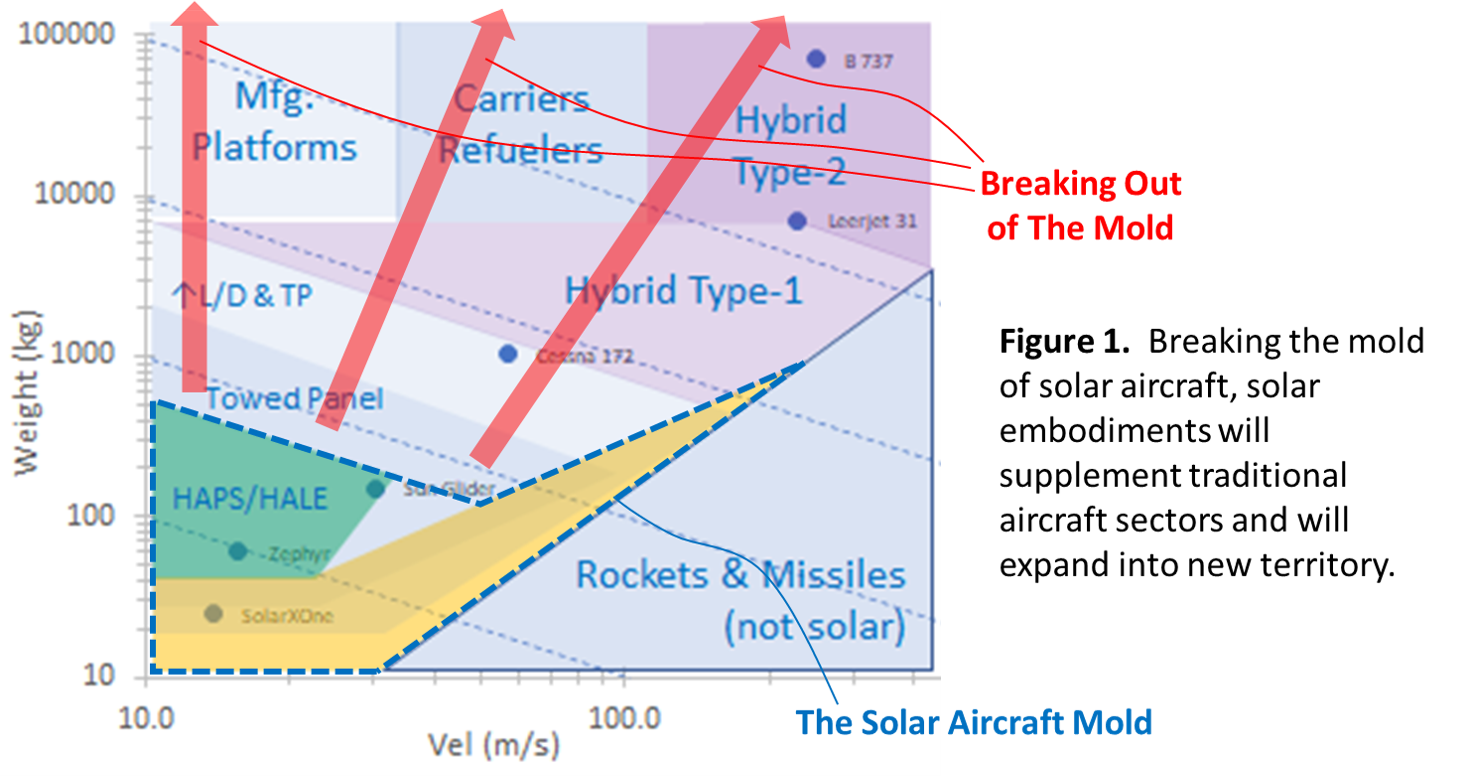Hybrid Aircraft and Aerial Platforms
Figure 1 illustrates different types of solar aircraft in regions of velocity versus weight space showing contemporary 24/7 solar (yellow) and direct solar regions of operation (green). Towed panel technology and increased L/D expand both regions towards and including smaller regional aircraft passenger services. Manufacturing platforms, carriers, and refueler regions are identified; they would be unable to routinely takeoff and landing due to extended solar arrays. The two hybrid aircraft regions would require fuel and/or battery augmentation.
For Type-1 hybrid aircraft, over half the power is from solar energy and battery power with all-electric propulsion service for all but long-haul markets. As the aircraft weight increases to the Type-2 Hybrid region, at least one fuel-powered jet engine is required to sustain the combinations of higher velocities and heavier weights.
Advantages for Type-2 Hybrid systems that can significantly reduce transit costs include:
For Type-1 hybrid aircraft, over half the power is from solar energy and battery power with all-electric propulsion service for all but long-haul markets. As the aircraft weight increases to the Type-2 Hybrid region, at least one fuel-powered jet engine is required to sustain the combinations of higher velocities and heavier weights.
Advantages for Type-2 Hybrid systems that can significantly reduce transit costs include:
- Electric propulsion is the major supplemental power source for takeoff, landing, and attaining altitude, during which velocities are lower than cruising velocities.
- Electric propulsion is a failsafe backup for a single-jet-engine design.
- Electric propulsion is a premium power that can be distributed and leveraged to reduce drag.
Solar Energy's New Frontiers
Solar energy is the fastest growing source of new electricity in America.
Applications will expand to all subsonic aerial vehicles with high and increasing profitability.
Applications will expand to all subsonic aerial vehicles with high and increasing profitability.
